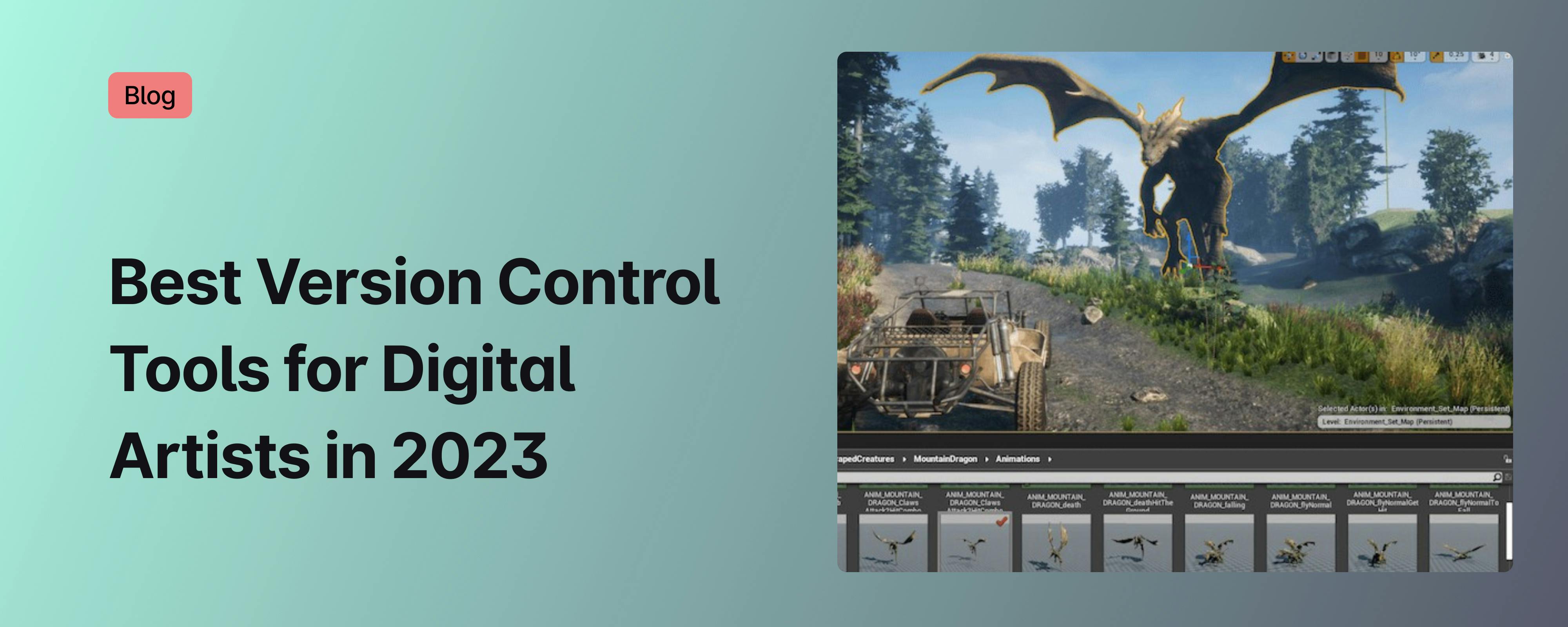Unreal Engine vs. Unity
A Comprehensive Comparison for Art Asset Handling


Choosing the right game engine can make all the difference in developing your dream game. In this article, we'll explore the advantages of Unreal Engine and Unity, specifically regarding handling art assets so that you can make an informed decision for your game development needs.
Introduction to Unreal Engine and Unity
The popularity of Unity and Unreal Engine among game developers can be attributed to their versatility, ease of use, and extensive features. Both engines offer powerful tools for creating 3D games and support for various platforms, including PC, console, and mobile devices. Unity's user-friendly interface and low learning curve make it a popular choice for indie developers and small studios. In contrast, Unreal Engine's advanced capabilities and scalability make it a go-to for larger studios and AAA games.
Game development is a complex process, and proper asset management is crucial for delivering high-quality games. Art assets, such as character models, textures, and animations, can make or break a game's visual design, and poorly optimized assets can lead to poor performance and bugs. Effective asset management ensures that a game's visuals are polished and consistent and allows developers to streamline their workflow and save time and resources.
Art Asset Handling in Unreal Engine
Unreal Engine is renowned for its powerful and flexible art asset pipeline, which enables developers to create high-quality, visually stunning games. Unreal Engine supports a wide range of art asset formats, including FBX, OBJ, and PNG, and its asset pipeline make importing, organizing, and managing assets in the engine a breeze.
One of the most significant strengths of Unreal Engine's asset pipeline is its support for physically based rendering (PBR). PBR is a rendering technique that aims to simulate real-world lighting conditions, resulting in more realistic and immersive graphics. Unreal Engine's support for PBR means developers can create incredibly detailed and realistic art assets, such as characters, environments, and special effects.
Another advantage of Unreal Engine's asset pipeline is its integration with Epic Games' Quixel Megascans library. Megascans is a massive library of high-quality 3D assets, textures, and materials that developers can use to create photorealistic environments quickly. Integrating Unreal Engine and Megascans means developers can easily add detailed, high-quality assets to their games without creating them from scratch.
Unreal Engine also offers several tools to help manage and optimize game assets. For example, the engine's Material Editor provides a node-based interface for creating and editing materials, allowing developers to customize every aspect of a material's appearance. Unreal Engine's Static Mesh Editor also enables developers to modify and optimize 3D models directly within the engine, such as adjusting their scale, orientation, and vertex count.
One game that demonstrates the power of Unreal Engine's asset-handling capabilities is "Fortnite" by Epic Games. "Fortnite" is a hugely popular Battle Royale game that features a colorful and vibrant art style with intricate character designs and environments. Unreal Engine's support for PBR and its integration with Megascans allowed Epic Games to quickly create highly detailed and visually stunning environments, along with the many iterations of character skins and gear that offer players extensive cosmetic customization.
.jpeg?ixlib=gatsbyFP&auto=compress%2Cformat&fit=max&w=2560&h=1440)
Fortnite by Epic Games is built with Unreal Engine
Another example of Unreal Engine's asset handling in action is "Hellblade: Senua's Sacrifice" by BAFTA award-winning game studio Ninja Theory. "Hellblade" is a third-person action game that features a highly detailed and immersive world with intricate character designs and animations. Unreal Engine's support for PBR and its advanced lighting system enabled Ninja Theory to create a highly realistic and atmospheric game world. The engine's Material Editor and Static Mesh Editor provided the tools to optimize assets and ensure smooth performance, even on lower-end hardware.
.jpeg?ixlib=gatsbyFP&auto=compress%2Cformat&fit=max&w=960&h=540)
Hellblade by Ninja Theory is built with Unreal Engine
Unreal Engine's asset-handling capabilities make it an excellent choice for game developers prioritizing flexibility, power, and realism. The engine's support for PBR, integration with Quixel Megascans, and built-in asset optimization tools can help developers create highly detailed and visually stunning games without sacrificing performance.
Art Asset Handling in Unity
Unity is known for its user-friendly interface and accessibility, and its asset management system is no exception. Unity supports a wide range of art asset formats, including FBX, OBJ, and PNG, and its asset pipeline makes importing, organizing, and managing assets in the engine more straightforward.
One of the strengths of Unity's asset pipeline is its support for automatic texture compression. Unity offers several texture compression options to help optimize game performance, including DXT, PVRTC, and ETC2. By default, Unity will automatically compress textures imported into the engine, allowing developers to optimize their game's performance without sacrificing visual quality.
Another advantage of Unity's asset pipeline is its support for asset bundles. Asset bundles allow developers to package game assets into smaller, more manageable files, which can be downloaded and loaded on demand. This can reduce a game's initial download size and improve players' loading times.
Unity also offers several tools to help manage and optimize game assets. For example, the Unity Asset Store provides a vast library of pre-made assets, including 3D models, textures, and sound effects, that developers can use to speed up their development process. Additionally, Unity's Editor includes several built-in tools for optimizing assets, such as the Mesh Optimization tool, which can help reduce the number of polygons in a 3D model to improve performance.
An example of Unity's asset handling in action is "Monument Valley" by ustwo Games. "Monument Valley" is a puzzle game that features intricate 3D levels with striking visual designs. Unity's asset pipeline allowed ustwo Games to manage and optimize the game's assets efficiently, which helped to ensure smooth performance on a wide range of mobile devices. Additionally, Unity's built-in tools for optimizing assets, such as the Mesh Optimization tool, helped to reduce the game's memory footprint and improve overall performance.
Unity's asset-handling capabilities make it an excellent choice for game developers who prioritize accessibility, user-friendliness, and optimization. The engine's support for automatic texture compression, asset bundles, and built-in asset optimization tools can help developers streamline their asset management process and optimize their game's performance without sacrificing visual quality.
Comparison of Art Asset Handling in Unreal Engine and Unity
Unreal Engine's Blueprints system is a powerful visual scripting tool that offers game developers a high level of flexibility when creating complex interactions between game elements. Rather than relying solely on code, developers can use a visual interface to design complex systems, such as character movement, AI behaviors, and physics simulations. This approach allows for greater creative freedom, speeds up development time, and reduces the risk of errors. With Blueprints, developers can quickly and easily prototype ideas, iterate on game mechanics, and create immersive gameplay experiences that push the boundaries of what is possible in game development.
Unity's asset pipeline is a powerful feature that makes managing assets within the engine more accessible for beginner developers. The engine's intuitive interface and simple drag-and-drop functionality allow for quick and easy asset importing and organization and management of assets within the engine. Additionally, Unity's support for a wide range of file formats and third-party plugins makes it easy for developers to work with external assets and tools. These features help streamline the asset management process and allow developers to focus on other aspects of game development, like gameplay mechanics and level design.
Unreal Engine's advanced animation system is a powerful tool that allows developers to create complex animations with a high degree of control and versatility. The engine's animation system features advanced blending, layering, and retargeting capabilities and support for motion capture data and procedural animation. These features enable developers to create lifelike animations that are highly customizable and can be easily integrated into their game's mechanics. With Unreal Engine's animation system, developers have the tools they need to create immersive and engaging gameplay experiences that push the boundaries of what is possible in game development.
Understanding the strengths and weaknesses of each engine's art asset handling is crucial for developers choosing the right engine for their game development needs. While both Unity and Unreal Engine offer powerful tools for creating and managing game assets, each engine has its unique strengths and limitations. By evaluating the specific needs of their game project and considering factors such as budget, team size, and platform support, developers can make an informed decision about which engine is best suited for their needs. Ultimately, choosing the right engine can make all the difference in a game project's success, and understanding each engine's art asset-handling capabilities is a critical factor in that decision.
Which Engine is Right for Your Game?
- Choosing the right engine for your game ultimately depends on your studio's needs and preferences.
- Unreal Engine's robust art asset management system and support for advanced animation techniques make it an ideal choice for developers who require more visual flexibility.
- Unity's accessibility and user-friendly interface make it an excellent choice for beginner developers and those looking for a streamlined asset pipeline.



